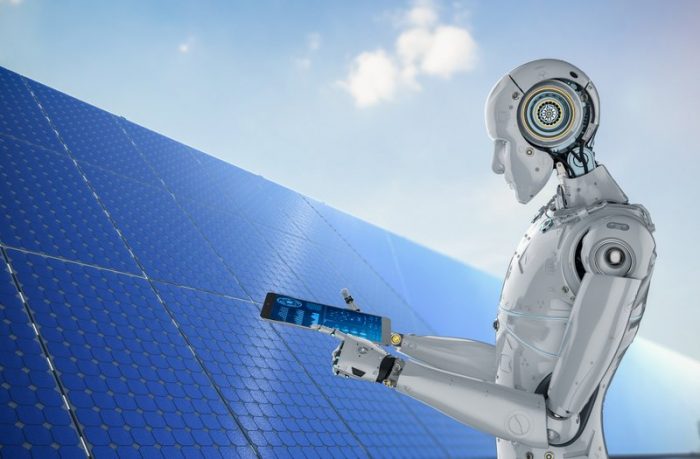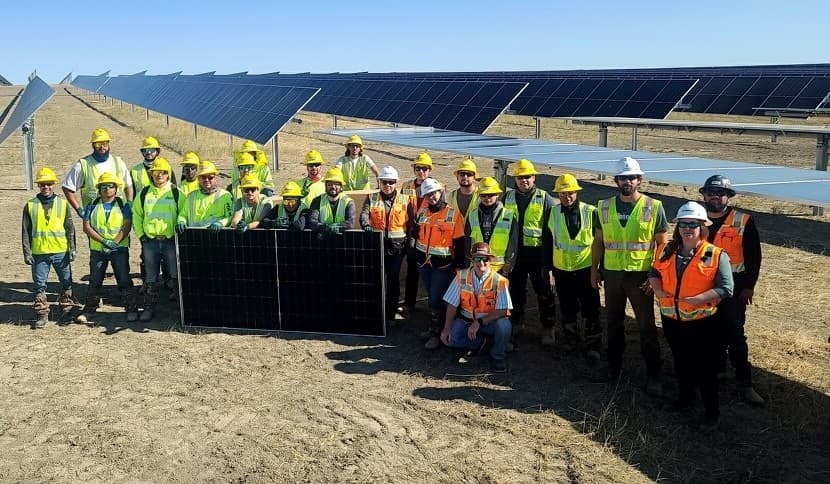Three tools driving digital transformation in solar

Contributed by Sami Ghantous and Matt Brocklehurst | Solar demand and the need to deploy and operate it at scale have made digital transformation a hot topic in this business. But what, exactly, does digital transformation mean in solar? And how do you reap the potential 20% to 30% boost in project efficiency and the 15% to 25% reductions in project costs that digital transformation can deliver?
To the first question, digital transformation in solar means capturing and centralizing the variety of data available across a solar firm’s project portfolio, whether those projects are in the early planning phases or already delivering electrons, and across site acquisition, interconnection, planning, permitting, design, financing, engineering, procurement, construction, contractor management, and operations and maintenance. You then can use that captured, centralized data to make better strategic and tactical decisions, communicate better, work faster, and make fewer mistakes. Hence the efficiency gains and cost reductions.
To the second question of capturing the value of digital transformation, the answer requires digital technologies.
In the case of solar deployment, three technologies are most important. Two of them – reality capture and deployment operations management systems – are mature and constantly improving. The third, artificial intelligence, remains in its infancy in solar development, but its potential is such that solar firms should start laying the groundwork now.
For more on the digital transformation of solar operations …
Watch an on-demand presentation of “Energizing the Future: A Fireside Chat with Cypress Creek Renewables about Digital Tools Driving Renewable Energy Success” This webinar featured Matthew Brocklehurst, EVP of Product & Technology from Sitetracker, and Sami Ghantous, SVP of EPCM at Cypress Creek Renewables. They discussed:
- The role of digital transformation in addressing challenges and bottlenecks in renewable energy projects.
- From development to O&M, real-world use cases showcasing the impact of digital tools on project, job, and asset efficiency and effectiveness.
- Strategies for integrating digital solutions to enhance project visibility, communication, and collaboration.
- The future of renewable energy project management in a digitally driven landscape.
1. Reality capture
Reality capture technologies provide a vivid look at a project’s status over the course of development. These systems combine aerial and ground-based image and LIDAR data capture via drones, robots, 360-degree cameras, and even smartphones. This is an iterative process, done through repeated drone flyovers and walkthroughs, scheduled and impromptu, throughout the course of a solar project. Its value lies in its comprehensiveness, and the ground truth it lays out for a project’s many players.
A contractor’s rosy descriptions of construction status can quickly wither under the glare of drone imagery captured the day before. More often, though, routinely updated site imagery and video fuels productive conversations related to approach, sequencing, status, and stumbling blocks. Reality capture also gives investors a view into the progress of the projects they’re funding and project owners a good way to participate in and steer the project throughout its lifecycle. That includes the operations & maintenance phase, during which reality capture can assess the state of hardware as well as vegetation management.
Reality capture data is one of the many varieties of data that then feed into our next key technology, deployment operations management systems.
2. Deployment operations management systems
Deployment operations management (DOM) systems are cloud-based, comprehensive packages that integrate all variety of project data, from maps and reality capture to designs, schematics, maps, project trackers, financials, and mobile-accessible field-team to-dos to help solar developers plan and manage their growing portfolio of job sites, assets, and crews in real-time. These systems combine the strengths of project-, asset-, and work-management software, sharpening the planning and development phase, speeding construction and implementation timelines, managing ongoing maintenance, and streamlining vendor and labor management.
Let’s look at a couple of examples. We know that handoffs from development to EPC (engineering, procurement, and construction) depend on what aspect of a project – interconnection, permitting, long-lead equipment, investment tax credits related to federal incentives, and so on – is at play. Multiply that by tens or hundreds of projects/subprojects, and the head-spinning inefficiencies commence.
DOM systems show you where projects are in their lifecycles and provide the insights you need to prioritize them to move forward efficiently.
Project finance is another example of where DOM makes a difference, providing budget estimates and actual costs that developers give lenders for construction-loan decisions and ongoing updates. This automates hours of manual data-wrangling and spreadsheet work. Having the data centralized and accessible lets the DOM system quickly deliver it – and easily feed it into budget forecasts or roll it up into executive-level dashboards and reports for overviews that aid strategic decision-making.
DOM systems extend into operations and maintenance. The equipment itself is already in a DOM system that has tracked it from the procurement phase. The system then delineates the equipment and the technicians best suited to do a particular repair or upgrade and how that job should be prioritized. It can standardize frequent job processes to make sure work is done fast and done right the first time. Here and elsewhere, we can expect artificial intelligence to come into play.
3. Artificial Intelligence (AI)
AI’s potential in solar has been well documented, including in these pages. And while the hype cycle has been at play, a bet against AI making a big difference in solar is a risky one.
- Machine learning-based solar design and predictive maintenance systems are already available.
- Generative AI models that handle natural-language queries from business developers to project managers to field personnel are on the way.
- AI-driven project-risk assessments are also coming soon.
- Safety applications are another area of interest: Combining location data with weather-forecast data, an AI-based system could warn jobsite teams of lightning risk in real time.
The most exciting AI applications – the ones that save a lot of time and money, improve forecasts, and spot new market opportunities – are yet to come. That’s a good thing, really, because they give solar firms the opportunity to get their key systems into the cloud (where AI works best) and move their data from many silos to that cloud, where the AI of today and tomorrow can tap into it.
The solar industry must embrace digital transformation to profitably meet the pressing demand for its products and services. Reality capture, deployment operations management systems, and AI constitute the essential ingredients of that transformation. The time to embrace them – or, in the case of AI, prepare for a long future embrace – is now.
Sami Ghantous is SVP of Engineering, Procurement & Construction Management at Cypress Creek Renewables. Matt Brocklehurst is EVP of Product & Technology at Sitetracker.





Comments are closed here.